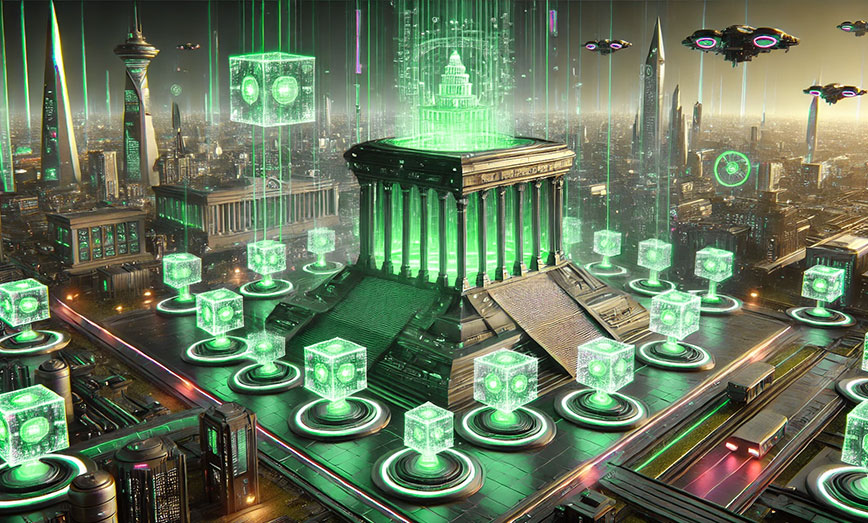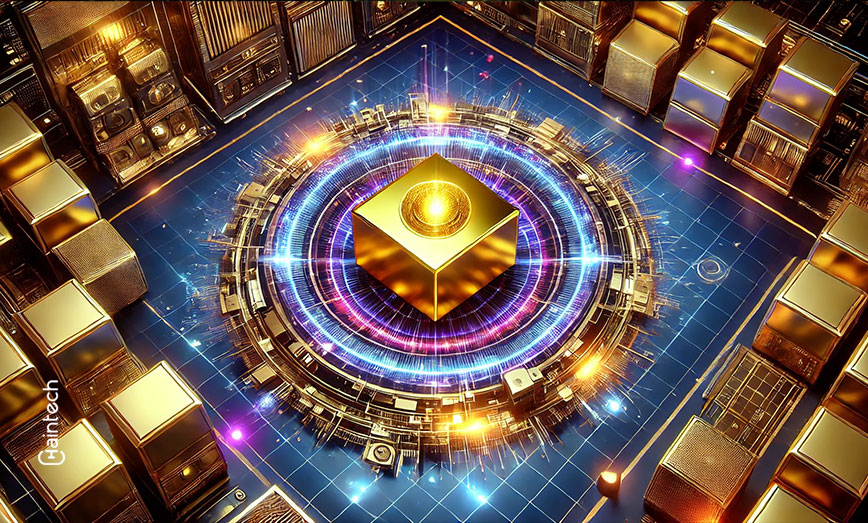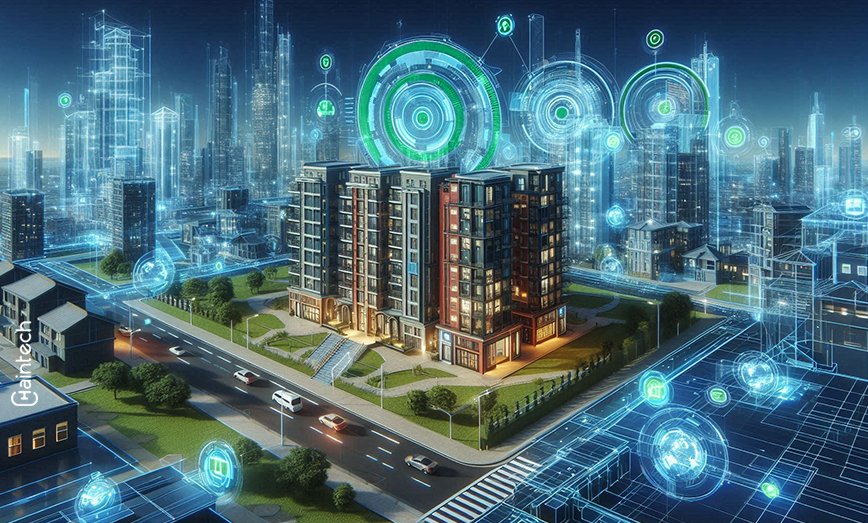Voting Systems and Blockchain: A Path to More Secure Elections

How does standing in a long line for hours on a hot election day sound? Quite frustrating, right? And what adds up more is that the clock keeps ticking until your turn finally arrives. You hear murmurs of missing voter registrations, delays in tallying votes, and concerns about ballot tampering. Such problems are common. They damage trust in the democratic process. Traditional voting systems face big challenges.
They struggle with security breaches, counting errors, and low voter turnout. Blockchain can fix these problems. It’s already being tested in some countries, proving its potential to transform elections and enhance democracy worldwide.
Now, picture a secure, transparent, and efficient voting system. You cast your vote online, confident it’s tamper-proof and recorded accurately. This isn’t science fiction. Blockchain technology can make this happen.
How blockchain restores trust in elections with integrity and efficiency
- Security, integrity, and efficiency, combined with Blockchain technology, can improve the voting system.
- It solves issues like fraud, delays, and low voter participation.
- Real-world examples show blockchain can rebuild trust in elections.
What is blockchain technology?
A buzzword? Yes, but only for the right reasons. Blockchain is an effective, open and reliable way of holding information. Think of it as a digital ledger. Every entry is permanent and visible to everyone on the network.
How blockchain works in voting
Picture each vote as a transaction. Once cast, it’s added to the blockchain, a decentralized network of computers. No single group controls the data, making tampering almost impossible. The network also verifies each vote to ensure accuracy.
- Transparency: Votes are visible, but identities stay private.
- Security: Votes can’t be changed after being recorded.
- Efficiency: Results are counted instantly, with no human errors.
Blockchain removes middlemen, drastically reducing the cost of work and all other factors, including speed and reliability. Overall, the new system is much more efficient than the previous calculator systems.
Interesting Fact
Researchers found that blockchain voting systems could save election costs by reducing the need for physical ballots, polling stations, and manual labor.
Traditional voting systems: what’s broken?
Why do we need blockchain? Traditional voting systems have serious flaws:
- Security risks: Tampering and hacking erode trust.
- Voter turnout problems: Long lines and hard-to-reach polling places keep people from voting.
- Slow processes: Counting votes manually takes time and is prone to mistakes.
- Lack of transparency: There is a feeling of distrust among voters regarding a system that is not entirely open, a lack of transparency.
This includes unverified mail-in ballots and broken voting machines during relative election seasons, for example. These issues led to doubts about the results. Blockchain can address these problems head-on.
How blockchain enhances voting systems
Blockchain is not just an upgrade. It’s a game-changer. Here’s how it improves elections:
Fortifying security
Blockchain makes votes unchangeable after they are recorded, stopping tampering and fraud. A decentralized network ensures no single person can manipulate the system.
Example: Voter identities are verified with cryptographic keys. Only eligible voters can cast ballots, reducing fraud risk.
Increasing transparency
Transparency builds trust. Blockchain creates a public record of votes. While everyone can see the data, voter identities remain hidden.
Boosting accessibility
Blockchain enables remote voting. People in rural areas, the elderly, and overseas voters can participate without traveling. This encourages higher turnout.
Streamlining the process
Manual vote counting delays results. Blockchain automates this, providing instant, accurate outcomes. This saves time and resources.
Real-world examples: blockchain in action
Here’s how some countries are using blockchain for voting:
| Country | Use case | Outcome |
| Estonia | E-voting for national elections | Increased voter trust and participation |
| South Korea | Blockchain-based party elections | Secure and tamper-proof voting |
| Switzerland | Municipal blockchain voting | Efficient and reliable vote-counting |
| United States | Pilot programs in select counties | Better accessibility and security |
| India | Testing blockchain for migrant voting | Easier voting access for remote citizens |
These examples prove blockchain’s potential to fix election challenges.
Steps to implement blockchain voting systems effectively
Introducing blockchain into voting systems requires careful planning and execution. Here’s how governments and organizations can make it work effectively:
- Assess infrastructure readiness: Evaluate existing technology infrastructure to determine if it supports blockchain integration.
- Conduct small-scale trials: Start with local or smaller elections to test blockchain systems and iron out any issues.
- Ensure voter accessibility: Create intuitive systems for every social group catered to both low-tech and high-tech individuals.
- Invest in protecting the electorate: Come up with robust encryption and a numerous range of decentralized networks to shield the cupboard against intruders.
- Provide public education: Raise awareness and train voters on how blockchain systems work to build trust.
These steps allow blockchain voting systems to be implemented efficiently while ensuring voter confidence and system reliability.
Interesting Fact
Blockchain can process and verify millions of votes in seconds, eliminating the need for manual counting and reducing errors to almost zero.
Overcoming challenges in blockchain voting
Blockchain voting isn’t perfect. It faces hurdles:
- Scalability: Managing millions of votes takes a lot of computing power.
- Digital divide: Some people don’t have the tech to use blockchain.
- Privacy concerns: It makes it difficult to maintain both confidentiality and openness at the same time.
- Economics: The expenditure required to install systems based on blockchains is rather high, but they are cost-effective in the long run.
As long as these major challenges can be anticipated and dealt with, we do not have to dwell on the disadvantages. The advantages are simply too many and too great.
Why blockchain matters for democracy
Blockchain does more than modernize elections. It restores trust in democracy:
- Stops fraud: Immutable records ensure every vote counts.
- Empower voters: Accessible systems let more people participate.
- Builds transparency: Public records promote accountability.
Imagine a world where anyone, anywhere, can vote securely and confidently. Blockchain can make that dream real.
Blockchain benefits in practice
- Verifies unique voter identities to prevent double voting.
- Cuts costs by removing paper ballots and manual counting.
- Enables real-time election monitoring with decentralized networks.
This blockchain isn’t just for developed nations. It’s ideal for countries with fragile democracies where election integrity is often questioned.
Steps to implement blockchain voting systems effectively
Introducing blockchain into voting systems requires careful planning and execution. Here’s how governments and organizations can make it work effectively:
- Assess infrastructure readiness: Evaluate existing technology infrastructure to determine if it supports blockchain integration.
- Conduct small-scale trials: Start with local or smaller elections to test blockchain systems and iron out any issues.
- Ensure voter accessibility: Develop user-friendly platforms that accommodate all demographics, including those less tech-savvy.
- Focus on cybersecurity: Employ robust encryption and decentralized networks to protect against hacking attempts.
- Provide public education: Raise awareness and train voters on how blockchain systems work to build trust.
These steps allow blockchain voting systems to be implemented efficiently while ensuring voter confidence and system reliability.
Blockchain voting vs. traditional voting: key differences
Blockchain voting stands apart from traditional voting systems in several ways:
- Security: Blockchain is tamper-proof, while traditional systems risk manipulation.
- Transparency: Unlike opaque manual processes, votes are recorded on a public ledger.
- Speed: Blockchain automates vote counting; traditional systems take longer.
- Accessibility: Blockchain allows remote voting, while traditional methods require physical presence.
- Cost: Over time, blockchain reduces expenses, unlike resource-heavy traditional systems.
These differences highlight blockchain’s potential to transform how elections are conducted worldwide. It’s a leap toward a more efficient, transparent, and accessible voting process.
The road ahead for blockchain voting
The future of blockchain voting relies on global teamwork. Governments, tech companies, and civic groups need to:
- Create scalable solutions for large elections.
- Close the digital divide to ensure equal access.
- Address privacy and legal concerns about voter data.
With these efforts, blockchain can revolutionize voting worldwide.
Paving the path to transparent elections
To put it simply, Democracy is never particular when it comes to fashion. Blockchain is that weird-looking headgear that is never accepted in Democracy, but it changes the game. It is particularly useful as it addresses critical flaws in conventional voting methods by increasing security, emphasizing transparency, and making the system more user-friendly. Real-world tests prove blockchain voting works and has a bright future.
Is democracy ready for this fashion? This is where we all come together as a movement to say that elections can be simpler, easier, and safer. We believe we can all come together and change the world with one voice.
Explore more about blockchain and its growing influence in democracy. There’s no better time to voice your constructive criticism and ideas than now! Building a stronger democratic system is possible.
FAQs
1. What makes blockchain voting secure?
Blockchain creates unchangeable records verified by decentralized networks.
2. Is blockchain voting expensive?
Initial costs are high, but it saves time by reducing manual tasks.
3. Can blockchain protect voter privacy?
Yes, it hides voter identities while keeping the voting process transparent.
4. Which countries have tried blockchain voting?
Countries like Estonia, South Korea, and Switzerland have tested it.
5. How does blockchain improve voter turnout?
It allows remote voting, making it easier for people to participate.









